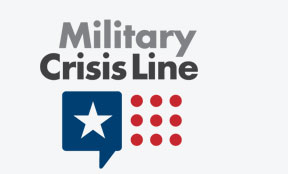
Call: 988 and press 1 for the Military Crisis Line.

Suicide prevention in the Army requires active engagement by leaders at every level. The resources listed below will help you implement your Suicide Prevention Program.
These materials include resources to bring awareness of the lethal means that may be used in a suicide attempt. There are also best practices that highlight prevention, along with easy safety storage tips and lifestyle advice such as increasing time and space between individuals and lethal means.
Use this tool to facilitate the identification, management, resourcing, and readying of Soldiers that may be at-risk for suicide and/or negative behavioral health outcomes. This tool provides orientation to suicide risk factors to empower leader to led engagement at team, squad, and platoon leader level.
This user-friendly guide is a resource for military Families dealing with stress, difficult situations or emotions. The guide includes tools to help people understand what they are experiencing and how to find help getting through a crisis and addressing concerns.
Safe communication about suicide starts with leaders. Use this guide to talk about suicide and suicide risk safely across your military service, installation, unit, office and community. Download the Implementation Guidance.
Suicide is a serious and complex issue with many contributing factors and no single solution. This guide will help people understand one of the contributing factors to suicide — access to lethal means — and includes information about lethal means safety and strategies to keep service members and their Families safe.
This handbook will help senior commanders implement the Army SPP. The handbook shows how leaders, with support, can synchronize installation efforts to improve readiness and help prevent suicide deaths.
Order print materials for delivery or download digital materials for immediate use. First, you must register for a free account and confirm your organizational affiliation. Follow the “New Users - Click Here to Register” to fill out and submit the form.
The purpose of this handbook is to examine, from a leadership perspective, the fundamental concepts and engagement necessary to develop and execute an effective SPP. Within the suicide prevention framework are tools that assess risk and protective factors. The framework also establishes a unit forum to put the SPP into use.
This guide/toolkit will help Reserve component commanders and other leaders develop a postvention plan after a unit member’s suicide. Postvention refers to response activities that happen immediately after a suicide affects the unit. Postvention has two purposes: to help survivors cope with grief and to prevent more suicides. Postvention is also an opportunity to impart accurate information about suicide, encourage help-seeking behavior and provide messages of resilience, hope and healing. Postvention can help facilitate unit cohesion, maintain mission readiness and restore unit effectiveness after a tragedy. The toolkit also outlines roles and responsibilities.
This toolkit is meant to promote healing among suicide loss survivors and to minimize negative effects of exposure to a suicide, including suicide contagion (“imitation” suicides). Information in this toolkit is drawn from policies, research, survivors’ feedback and subject matter experts’ experience supporting survivors.
This checklist will guide leaders in their response to suicide deaths and attempts. Research suggests a unit leader’s response can play a role in preventing additional deaths by suicide/suicide events or inadvertently contributing to increased deaths by suicide/suicide attempts (suicide contagion). This checklist will also help augment local policies. And it incorporates “lessons learned” from leaders who have experienced suicide in their units. The checklist does not outline every contingency of a suicide or a suicide attempt.
This handbook provides commanders with guidance for leading their units after a suicide. This handbook includes structured activities that promote recovery and healing among those affected by suicide. The activities help reset unit readiness by destigmatizing the tragedy and promote individual and unit recovery.
The three phases of postvention are:
The Health Promotion program focuses on promoting healthy lifestyles, preventing disease and optimizing overall health and well-being among Army personnel, their Families and DA Civilians.